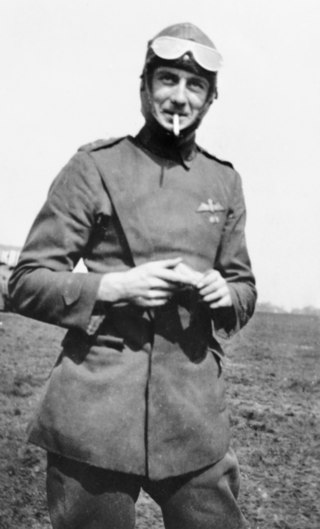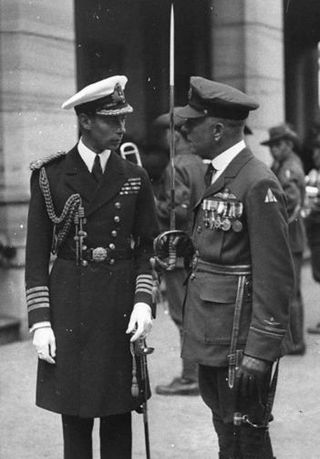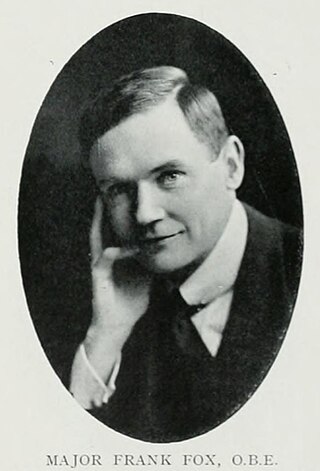Related Research Articles

The Sydney Morning Herald (SMH) is a daily tabloid newspaper published in Sydney, Australia, and owned by Nine Entertainment. Founded in 1831 as the Sydney Herald, the Herald is the oldest continuously published newspaper in Australia and claims to be the most widely read masthead in the country. The newspaper is published in compact print form from Monday to Saturday as The Sydney Morning Herald and on Sunday as its sister newspaper, The Sun-Herald and digitally as an online site and app, seven days a week. It is considered a newspaper of record for Australia. The print edition of The Sydney Morning Herald is available for purchase from many retail outlets throughout the Sydney metropolitan area, most parts of regional New South Wales, the Australian Capital Territory and South East Queensland.

Brigadier General Sydney Charles Edgar Herring, was an Australian Army colonel and temporary brigadier general who fought with distinction during the First World War. He retired in 1946 as an honorary brigadier.
Adrian Milford Deamer was an Australian journalist, newspaper editor and lawyer.

John Bede Dalley was an Australian journalist, editor and novelist. He had a long-standing association with The Bulletin magazine in Sydney and was also employed as an editor and correspondent with The Herald newspaper group in Melbourne. His published novels took a sardonic view of upper-class Sydney society and the English aristocracy.

Walter Oswald Watt, was an Australian aviator and businessman. He served as a pilot during World War I with, firstly, the French Foreign Legion and, secondly, the Australian Flying Corps (AFC).

Mary Elizabeth Kathleen Dulcie Deamer was a New Zealand-born Australian novelist, poet, journalist, and actress. She was a founder and committee member of the Fellowship of Australian Writers.

Air Vice Marshal Adrian Lindley Trevor Cole, CBE, DSO, MC, DFC was a senior commander in the Royal Australian Air Force (RAAF). Joining the army at the outbreak of World War I, he transferred to the Australian Flying Corps in 1916 and flew with No. 1 Squadron in the Middle East and No. 2 Squadron on the Western Front. He became an ace, credited with victories over ten enemy aircraft, and earned the Military Cross and the Distinguished Flying Cross. In 1921, he was a founding member of the RAAF.
Margaret Mary Jones was an Australian journalist, noted for being one of the first accredited to China after the Cultural Revolution, and first female Foreign Editor on any Australian newspaper. Described as a "trailblazer for women journalists", she wrote for John Fairfax Limited for a total of thirty-three years.

Garnet Francis Malley, was an Australian fighter ace of World War I, credited with six aerial victories. He was an aviation adviser to Chiang Kai-shek's government in China during the 1930s, and an intelligence officer in World War II.

Henry Aloysius Petre, DSO, MC was an English solicitor who became Australia's first military aviator and a founding member of the Australian Flying Corps, the predecessor of the Royal Australian Air Force. Born in Essex, Petre forsook his early legal career to pursue an interest in aviation, building his own aeroplane and gaining employment as an aircraft designer and pilot. In 1912, he answered the Australian Defence Department's call for pilots to form an aviation school, and was commissioned as a lieutenant in the Australian Military Forces. The following year, he chose the site of the country's first air base at Point Cook, Victoria, and established its inaugural training institution, the Central Flying School, with Eric Harrison.

Leslie Hubert Holden, MC, AFC was an Australian fighter ace of World War I and later a commercial aviator. A South Australian, he joined the Light Horse in May 1915, serving in Egypt and France. In December 1916, he volunteered for the Australian Flying Corps and qualified as a pilot. As a member of No. 2 Squadron on the Western Front, he gained the sobriquets "Lucky Les" and "the homing pigeon" after a series of incidents that saw him limping back to base in bullet-riddled aircraft. He was awarded the Military Cross, and went on to achieve five aerial victories flying Airco DH.5s and Royal Aircraft Factory S.E.5s.

Malcolm Stuart Kennedy was an Australian rules footballer who played with Melbourne in the Victorian Football League (VFL). He was killed in action on active service in Belgium in World War I.

Geoffrey Forrest Hughes, was an Australian aviator and flying ace of the First World War. He was credited with 11 aerial victories, and won a Military Cross for his valour. After a postwar award of the Air Force Cross, he returned to Australia and completed university. He became a businessman and a solicitor in the family law firm while retaining his interests in aviation. From 1925 through 1934, he was president of the Royal Aero Club of New South Wales, and largely responsible for government support of the club. Despite his business concerns, he returned to military duty during the Second World War. He commanded an aviation training school and rose to the rank of group captain before surrendering his commission in April 1943. After the war ended, he moved into public life and the political realm.

The Farmer & Settler was an English-language broadsheet newspaper published in Sydney, New South Wales, Australia, between 1906 and 1957. It was primarily published weekly.
Oliver Hogue was an Australian soldier, journalist, and poet.

Glen William ("George") Warnecke was an Australian journalist, editor, and publisher. He was born in Armidale, New South Wales and began his journalism career in 1913 as a junior reporter for The Evening News. He went on to become the founding editor of The Australian Women's Weekly, the Editor-in-chief of Australian Consolidated Press, and a co-founder of Atlas Publications. In his later years Warnecke settled in Dublin with his Irish-born wife Nora Hill who had had an active career as a concert and opera singer. He died in Dublin at the age of 86 and was buried there next to his wife. His papers and correspondence are held in the State Library of New South Wales.

Sir Frank Ignatius Fox was an Australian-born journalist, soldier, author and campaigner, who lived in Britain from 1909.

Frederic Morley Cutlack was an Australian journalist and military historian. He was an author of a number of books on aspects of Australian military history, including one of the volumes of the official history series Official History of Australia in the War of 1914–1918.

Percy William Vaughan, known as Colonel Vaughan, was a bank manager and officer in the Australian Army.
Deamer is a surname. Notable people with this surname include:
References
- ↑ "Australian Comforts Fund Souvenir Collection". Published & Digitised Collections. Australian War Memorial. 2005. Retrieved 4 April 2009.
- ↑ "Australian Army Records". Deamer's file. National Archive. 1914–1944. Retrieved 4 April 2009.